Our plan for today was to visit the historic Old Goal Museum in Roebourne, go up to the Mount Welcome Lookout, then out to the Harding Dam and then back to Cossack in the afternoon. One can have the best laid plans, but not always do they pan out as we plan and today was one of those days!
We left the Caravan Park at 9.00am and Peter decided we should check at the Roebourne Visitor Centre first. Whilst he did the checking we walked around the Cultural Complex which was across the road. The complex was seven years in the planning with lots of community consultation. Construction commenced in 2011. I have found out from the web it was built by the Ngarluma and Yinjibarndi Foundation and we were told last year, that they ran out of money and the administration building at the side couldn't be finished. Last year there were windows broken, but all the glass from every window and glass door in the building has been smashed.
I have also found out from the web that the the Cultural Complex was to be owned and operated by NYFL and it was to provide the cultural, linguistic, artistic, social and environmental needs, wants and desires of Roebourne’s local Aboriginal Community, whilst economically sustaining itself through encouraging custom from visitors and tourists. The Amphitheatre was to host cultural events and stage outdoor events of film, dance, theatre, corroborees and music. The function centre is large enough for 150 people. There was to be a Museum, cafe/restaurant, retail outlet, men's and women's spaces for traditional meeting places, elders teaching and workshop spaces and the list goes on. It is now an eyesore in the town and detracts from the conference centre and amphitheatre. The entrance walkway to the amphitheatre of the steel boomerangs is very impressive.
Peter came back from the Visitor Centre and said the only way you are able to do a tour of the historic Old Goal is to book online. There is a tour at 9.30am and 11.30am and both tours include a tour out to Cossack. Peter was told they would not accept cash if we went up to the Old Goal. As it was only just after 9.30am, it was logical to think we could be part of the tour. They only way was to book online. Well this all ended up false information and it does appear the tourist is missing out because there is a feud happening between the private company running the tours and employees of the Visitor Centre. We established the information given was wrong, when we went to the Museum later in the morning and read a sign on the fence. We have been invited to put a complaint in writing so something can be done! Hopefully we will be able to help future tourists to the town.
So we decided to have morning tea at this cute historic old stone bakery named 'Juel's Bakery & Cafe'. It is one of the very early buildings of the district and it was built as a bakery, but over the years has been used as a butcher shop along with a number of other business ventures. There were plenty of tourists stopping for a morning coffee. It was interesting to learn that the Victoria Hotel across the road from Juel's had been closed for 20 years, is now heritage listed and it is having a face-lift. Geraldton Building Services and Cabinets seemed to be the company with the contract and the renovations have been funded by Australian Government - Building our Future, WA Government, Pilbara Development Commission and the Yindjibarndi Aboriginal Corporation. It is going to be quite a hotel from the photos on the wall.
The Anzac Memorial in the main street is very nice and we loved the spinifex cutout around this image of the soldier. It is a shame that you only see the soldier for a short time from each side of the street as you are travelling through Roebourne. We believed that the whole thing should have been turned around, but then maybe it is to catch your eye and make you stop. Not that easy though when you are towing a van! The new memorial was unveiled on the Centenary of Gallipoli on the 25th April 2015.
Whilst we were at Juel's Bakery, Vicki Davidson and her husband Ian from Geraldton came in. They were up visiting a granddaughter and said they had hoped to go out to the Harding Dam, but the road was closed. Our plans for the day were really going pear shape! But persistence prevailed and there was another visit to the Roebourne Visitor Centre, phone calls to the Visitor Centre in Karratha and an unanswered phone call to the Water Corp at Harding Dam. Still no success though! No one knew about the road being closed, so we decided to give it a go. The sign on the road did say the Harding Dam was closed, but we decided to keep travelling out there. We came across a grader driver and Pete decided to ask him if he knew about the closure. He knew nothing of anything being closed and said "It wouldn't be unusual for the Water Corp to have not changed the sign"! We kept going and yes it was open and we were able to have another look at the Harding Dam and John, Dorothy, Dennis and Margaret all agreed it is quite something. We had our picnic lunch in the recreation area beside Miller Creek.
The Harding dam is an earth and rock fill dam, the length of the embankment is 320 metres and the reservoir capacity is 64 million cubic metres. The area of the reservoir is 14 square kilometres and the catchment area is 1071 square metres. The dam was completed in 1985 and officially opened by the Minister for Water Resources Hon Arthur Tonkin MLA. The storage of Harding Dam is named Lake Poongkaliyarra.
Before we left Roebourne, to try our luck at getting to Harding Dam, we walked the main street. There was lots of information on the original owners of the buildings as Roebourne is the oldest settlement between Geraldton and Darwin and the historic buildings were constructed between 1870 and 1900. We went up to the Mount Welcome Lookout for fantastic views of the hinterland in every direction. The aboriginal cut-outs from corten steel provide another aspect to the lookout and the aboriginal culture of the region.
From Harding Dam it was back to Cossack for another look. We have all been to Cossack before, but always good to go back for another look at the historic site. The Hall family were early pioneers at Cossack. In the historic courthouse the family story is told. William Shakespeare Hall was quite a man and it is written on a display panel "And now lies in the silent tomb in a hallowed spot of the Cossack cemetery the mortal remains of the father of the district, the model of intrepidity, integrity and honour, an honoured husband, revered father and true friend, and unquestionably the most esteemed personage who has ever associated himself with the North".Published in the West Australian Friday 8th March 1895.
When we visited some years ago the art awards were on display. The Art Awards at Cossack each year is a prestigious event, held from the third week of July, for a month each year. It attracts artists from all over Australia and the mining companies are generous supporters of the awards. There is usually an artist in residence throughout the month.
Cossack was vital to the early development of the North West. Cossack was the original port of pearls before the luggers moved north to Broome in 1886. It was an early hub for gold prospectors in the region, and a port for pastoralists in the Pilbara. Following the opening of the Point Samson jetty, the town was dissolved in 1910 and abandoned by 1950. The beautifully restored bluestone buildings in the ghost town of Cossack are testament to this small town’s huge importance in 1880’s and 1890’s and are an insight to the hardships and successes of the first settlers.
Finally we just had to complete our day of touring with a visit to the yacht club and the Port Lambert loading facility. The crew of a trawler boat were just about to set off for their nights work. We presume they were trawling for prawns. Back to the caravans to shower and get the glad rags on, before wandering over to the hotel across from the caravan park for dinner. We all had seafood of some sort. All meals were reasonably priced and very nice. Time to pull out of Point Samson in the morning.
I have just been searching the internet to find information about Emma Withnell. Emma is recognised in the Heritage Trail of the area, taking in Roebourne, Cossack and Point Samson. I have seen Emma's name in the CWA Archival material, so I had hoped with a visit to the Old Goal, I would have found out more. I am even more annoyed now that we were given such false information from the Roebourne Visitor Centre! I have found that a memorial made from of Nickol Bay stone, was erected by the CWA in 1961, at the site of the original Withnell homestead near Mount Welcome, to commemorate the work of Emma in the North West. The following is part of the story of Emma's life from the web. It is the publication from the Australian Dictionary of Biography by Douglas Sturkey. I will just have to visit the Baandee Rest Room at Mangowine on our way home and take more notice of the photo of Emma hanging on the wall. I have found this photo in the CWA database photos that I scanned a number of years ago.
Emma Mary Withnell (1842-1928), pioneer, was born on 19 December 1842 at Guildford, Western Australia, daughter of George Hancock, farmer, and his wife Sophia. She was tutored on a farm near Beverley by her university-educated father and was later to do the same for her own eleven children. On 10 May 1859 at York she married John, son of William Withnell, a stonemason who had migrated in 1830.
Attracted by the discovery of good pastoral land in the north-west, Withnell sailed for Port Walcott in 1864 in the chartered Sea Ripple with Emma, two children and her sister Frances. All of their livestock except eighty-six sheep was lost when the ship ran aground. Camped at Nickol Bay, they lost more equipment but were saved from death by thirst by a settler. Wearing makeshift clogs of wood and sheep-skin, the family walked to the Harding River and settled near Mount Welcome where Emma soon bore her third child.
Widely known as the 'Mother of the north-west', Emma looked after the sick, delivered babies and regularly conducted religious services in her home. The Aboriginals trusted and respected her; she nursed and vaccinated many in a smallpox epidemic in 1866. She and John were honoured by being made a 'Boorong' and a 'Banaker', which enabled them to move freely amongst the tribes. 'The awful loneliness' was her greatest burden as she affirmed when sympathizing with new arrivals in the north, 'for the work is hard and the lonesomeness at times unbearable'.
Survived by nine of her eleven children, Emma died of cholecystitis on 16 May 1928 at Mount Lawley, and was buried in the Anglican cemetery at Guildford. Her portrait hangs in the 'Hall of Pioneers' in the Baandee rest house at the National Trust property at Mangowine. In 1961 the Country Women's Association erected a memorial of Nickol Bay stone on the site of her Roebourne home

 Roebourne, Western Australia, Australia
Roebourne, Western Australia, Australia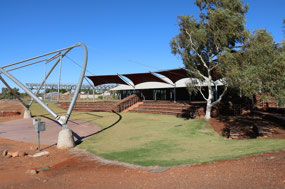
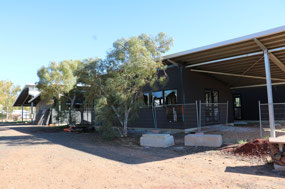
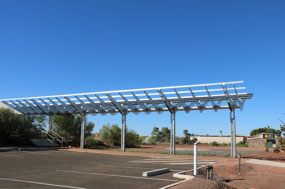
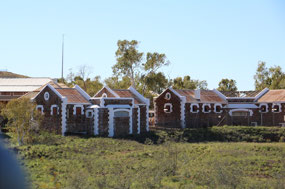
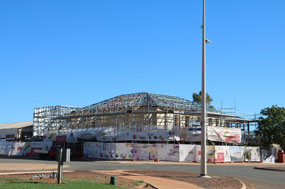
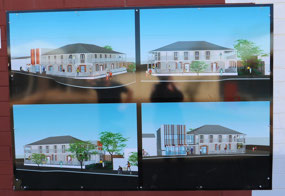
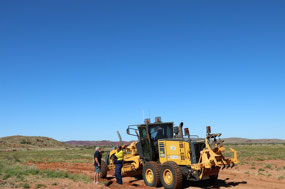

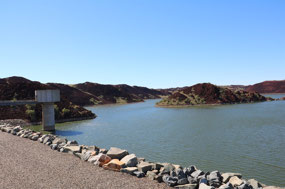

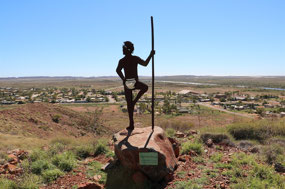
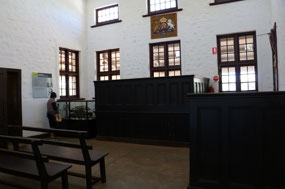
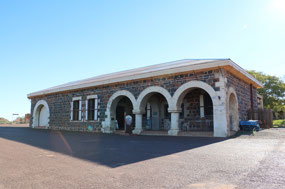

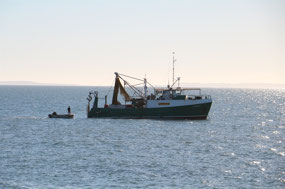


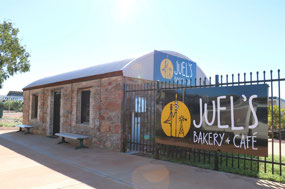
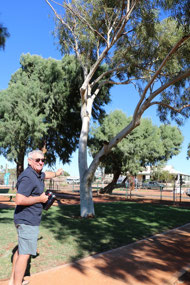

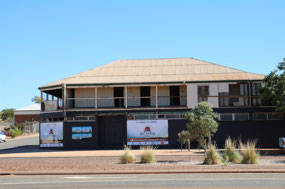
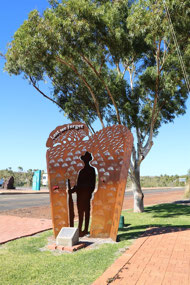

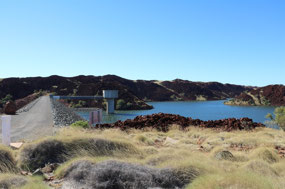
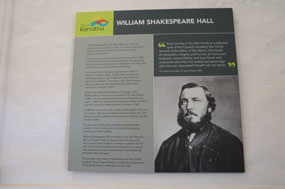
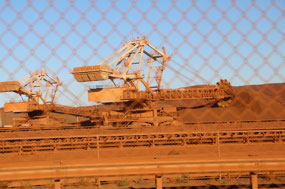
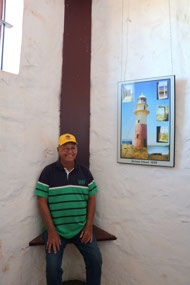
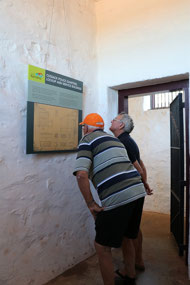
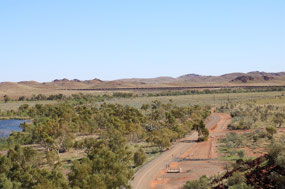
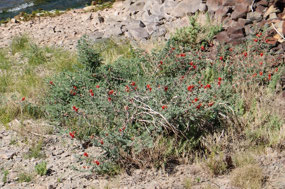
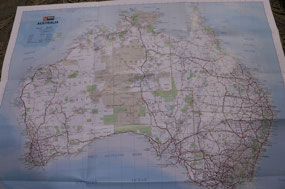
Jenny
2018-07-02
An interesting day nonetheless. Some dwys are great and some days are dam frustrating. Glad you got to Harding Dam, looks impressive. I remember the Old Gaol, it was there that it really started to hit home how cruel we were to the aboriginals. There was no organised tour, we walked through ourselves.
pamandpete
2018-07-02
Yes when we did the Old Goal years ago too and we just walked through. The cost is $20.00 with the private company and then extra if you want to do a tour of Cossack.